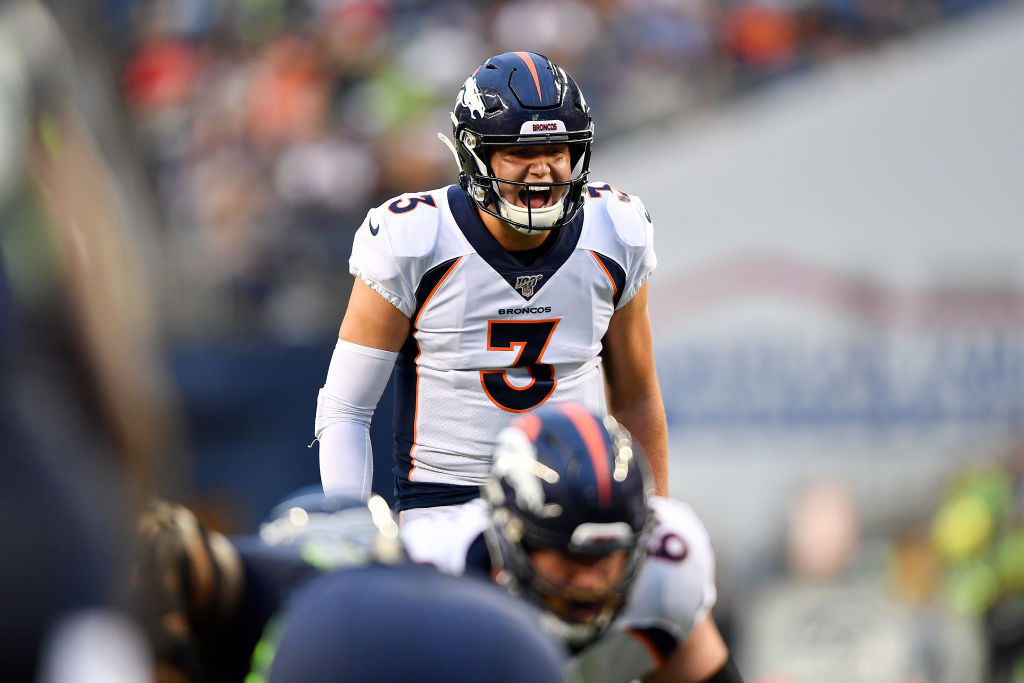NFL
Why the NFL Abolished the Third Quarterback Rule

Most professional sports leagues have their fair share of unusual rules, which often confuse all but the most diehard fans. MLB has the infield fly rule. The NBA often throws off fans with the details of the three-second and eight-second rules. Meanwhile, in the NFL world, the now-abolished third quarterback rule is one of the weirdest in the league.
The history of this rule was especially confusing given the many changes it underwent over the years. Let’s break down the intricacies of the third quarterback rule, how it affected the game, and why the league chose to do away with it.
History of the third quarterback rule
NFL roster sizes have changed over the years. A new CBA deal recently pushed the roster size from 53 to 55 players, reports USA Today. Regardless, for most of football history, only 45 players could dress for a game. Among those 45 players were just two quarterbacks. The third quarterback rule, introduced in 1991, allowed teams to utilize — you guessed it — a third QB.
The league introduced the rule largely in response to 1990’s notorious “Body Bag Game” between the Washington Redskins and the Philadelphia Eagles. When both of the Redskins’ quarterbacks got injured, the team was forced to use star running back Brian Mitchell as a quarterback in the fourth quarter.
The third quarterback was always somewhat strange. Technically, teams still only had 45 active players. The rule allowed one additional QB from the inactive list to dress for the game, essentially turning them into a 46th man. However, the rule’s first iteration stipulated that once the third quarterback entered the game, the first and second quarterbacks could no longer play.
Evolution of the rule
In 1995, the NFL slightly relaxed the rules governing the use of a third quarterback. The new rule allowed the first and second quarterbacks to re-enter the game — only under certain conditions. If the third QB entered the game in the first three periods, then the old rules applied; neither of the other two quarterbacks could return.
If, however, the third quarterback entered in the fourth period or overtime, then the two other quarterbacks would stay eligible to return to the game. In that case, though, the rules prohibited the third quarterback from participating in the game at the same time as either of the other two QBs.
This new wrinkle created its own set of challenges for coaches. A perfect example came during a 1999 game between the New York Jets and New England Patriots. When the Jets’ starting quarterback got injured in the second quarter, coach Bill Parcells wanted to bring in his normal backup quarterback, Rick Mirer. Only Parcells had listed Mirer as the third QB.
The listed second quarterback was the team’s punter. So, because Parcells didn’t want to lose his punter, he had to use him as quarterback all the way through the third quarter. Then he finally called in Mirer to finish the game.
Abolishing the third quarterback rule
Most analysts agree that the third quarterback rule was always needlessly complicated. In recognition of this, players and owners collectively agreed to abolish the rule starting in the 2011 season. But they didn’t get rid of the third quarterback altogether. Instead, the NFL simply increased its active game-day roster from 45 to 46 players.
Of course, not all teams choose to keep three quarterbacks on the roster. Instead, they use that additional roster slot for other more commonly needed positions. That said, many teams do use a third quarterback as a means of development.
The odds that a third quarterback will ever see playing time in an NFL game remain slim but not nonexistent. In 2019, according to the Detroit Free Press, the Lions’ third quarterback David Blough used an unexpected playing opportunity to prove he had the skills to lead an NFL offense. Ultimately, he started five games for the Lions that season.











